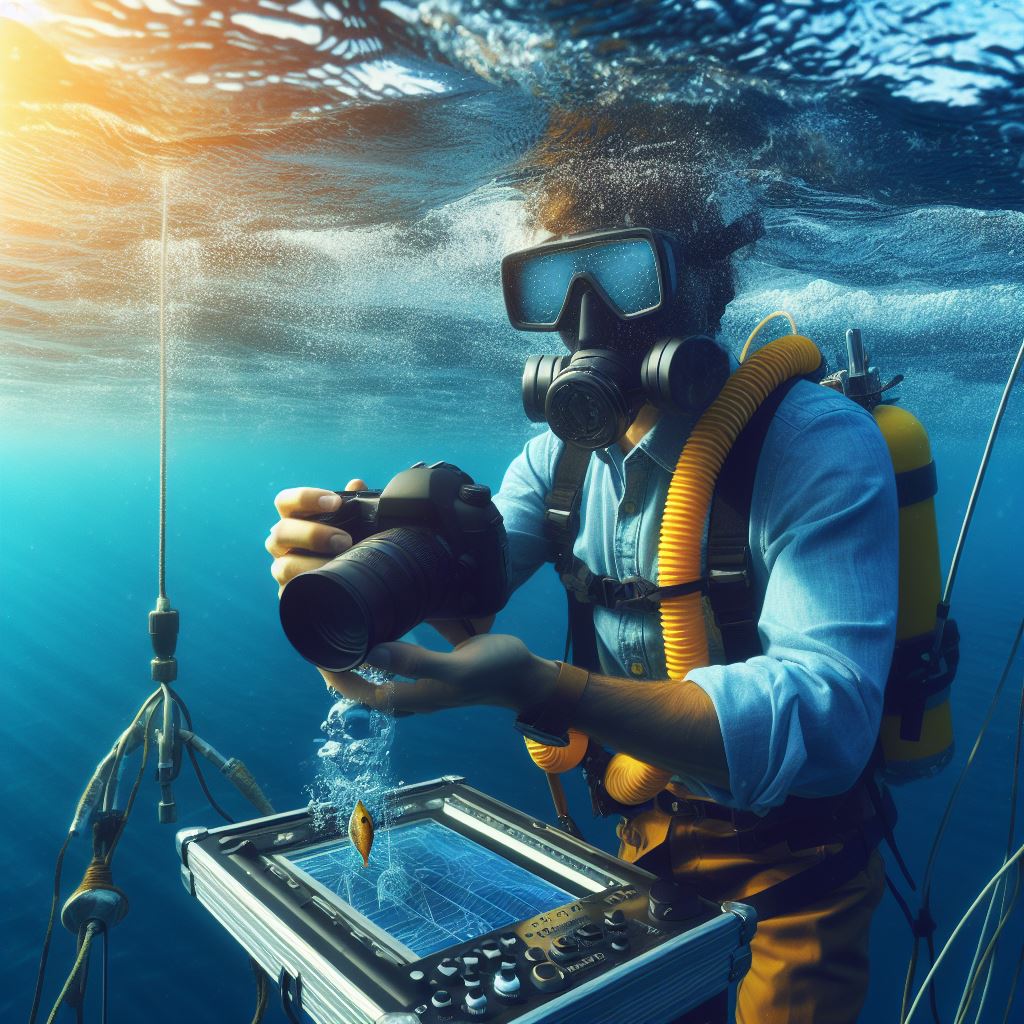Introduction
Climate change threatens ecosystems worldwide. Understanding its impact on New Zealand’s marine life is crucial.
Marine life in New Zealand faces unprecedented challenges due to climate change.
Rising sea temperatures, ocean acidification, and extreme weather events endanger fragile marine ecosystems.
New Zealand’s coastal communities rely on healthy marine environments for sustenance and livelihoods.
The intricate web of marine life supports biodiversity, fisheries, and tourism in New Zealand.
As climate change intensifies, the resilience of marine ecosystems becomes paramount.
Studying the effects of climate change on NZ marine life aids in informed conservation efforts.
Researchers strive to unravel the complex interactions between climate change and marine ecosystems.
Understanding these dynamics is crucial for developing effective mitigation and adaptation strategies.
Conservation initiatives aim to protect vulnerable species and preserve marine biodiversity in New Zealand.
By studying the impact of climate change on marine life, we can safeguard the future of our oceans.
In the following sections, we delve deeper into specific threats and solutions concerning NZ marine life.
Current State of NZ Marine Life
New Zealand is blessed with a wide array of diverse marine ecosystems that thrive along its coastlines.
These ecosystems are home to an abundance of unique and fascinating species, making them a treasure trove of biodiversity.
Diverse Marine Ecosystems
From the crystal-clear waters of the Bay of Islands to the rugged fjords of Fiordland, New Zealand boasts a variety of marine ecosystems.
Personalized Career Consulting
Unlock your potential with expert career advice tailored to your goals. Get personalized guidance and actionable steps toward your dream career in New Zealand.
Get StartedThe country’s coastline stretches for thousands of kilometers, encompassing diverse habitats such as rocky shores, sandy beaches, coral reefs, and kelp forests.
One of the most iconic marine ecosystems in New Zealand is the Great Barrier Reef, located off the northeastern coast.
This colossal coral reef teems with a multitude of marine life, including colorful reef fish, turtles, and even dolphins.
It is a hotspot for snorkeling and scuba diving enthusiasts from around the globe.
Rich Biodiversity and Unique Species
The marine ecosystems of New Zealand are brimming with a staggering variety of species, many of which are found nowhere else in the world.
These unique species have evolved to adapt to the country’s isolated geographical location and distinct oceanic conditions.
For instance, the Hector’s dolphin is one of New Zealand’s endemic species.
This small and playful dolphin is known for its distinctive black and white markings, making it a beloved icon of the marine life in the country.
Additionally, the kiwi, a flightless bird well-known on land, has distant relatives in the marine realm, such as the kiwi crab and kiwi scallop.
Importance for New Zealand’s Economy and Culture
Marine life plays a vital role in the economy and culture of New Zealand.
The country’s fishing industry heavily relies on the abundance of fish stocks found in its waters, providing employment and income for many communities.
The export of seafood is a significant contributor to New Zealand’s economy.
Furthermore, marine tourism is a thriving industry, attracting visitors from all over the world who come to appreciate and experience the unique marine ecosystems of the country.
Snorkeling, diving, and whale-watching tours generate revenue and create jobs in coastal regions.
Transform Your Career with a Professional CV and Cover Letter
Stand out to employers with an ATS-optimized resume and tailored cover letter designed to match your dream role. Let us craft your job application materials for success!
Get StartedIn addition to economic benefits, marine life holds immense cultural importance for New Zealand’s indigenous population, the Māori.
Traditionally, Māori have relied on the ocean for sustenance and have a deep spiritual connection to the marine environment.
They have rich narratives and legends woven around the creatures that inhabit their waters.
Preserving the Future
Despite the current abundance of marine life in New Zealand, it is vital to recognize the impact of human activities on these delicate ecosystems.
Climate change, pollution, overfishing, and habitat destruction pose significant threats to the future of marine life in the country.
Efforts are being made to protect and preserve these ecosystems.
Marine reserves and protected areas have been established to safeguard habitats and ensure the sustainability of fish stocks.
Sustainable fishing practices and marine conservation initiatives are also gaining momentum.
It is crucial to continue raising awareness about the value of marine life, both in terms of its ecological importance and economic benefits.
By taking collective action and implementing responsible practices, we can ensure that future generations can marvel at the diverse marine ecosystems and unique species that make New Zealand’s waters so exceptional.
Read: NZ’s Unique Marine Ecosystems Explored
Climate Change and its Causes
The concept of climate change and its main causes
Climate change refers to long-term shifts in weather patterns, including temperature, precipitation, wind, and other factors.
It is primarily caused by the excessive emission of greenhouse gases into the atmosphere.
Role of human activities
Human activities play a crucial role in accelerating climate change.
Boost Your Career with a Standout LinkedIn Profile
Attract recruiters and expand your network with a fully optimized LinkedIn profile tailored to highlight your strengths and professional goals. Let your profile open doors to new opportunities!
Get OptimizedThe burning of fossil fuels, such as coal, oil, and gas for energy production, releases large amounts of carbon dioxide (CO2) into the atmosphere.
Deforestation, industrial processes, and agricultural practices also contribute significantly to greenhouse gas emissions.
The increased levels of greenhouse gases trap heat in the atmosphere, creating a blanket effect that leads to global warming.
This results in a rise in global temperatures, melting ice caps, and glaciers, and sea-level rise.
Global implications of climate change and its effects on ecosystems worldwide
Rising temperatures
Climate change has widespread implications globally.
It threatens ecosystems, biodiversity, and the overall functioning of the planet’s natural systems.
Rising temperatures disrupt the delicate balance of ecosystems, leading to the extinction of species, loss of habitats, and altered patterns of migration.
Ocean acidification
Ocean acidification is another consequence of climate change.
Increased CO2 levels in the atmosphere are absorbed by the oceans, leading to higher acidity levels.
This acidification harms shell-forming marine organisms, such as corals and shellfish, impacting entire marine food chains.
Rising temperatures also affect marine life. Many species, including fish, turtles, and seabirds, rely on specific temperature ranges to survive and reproduce.
Disrupting these temperature patterns can lead to a decline in population numbers and even extinction.
Increased frequency and intensity of extreme weather events
The increased frequency and intensity of extreme weather events, such as hurricanes, cyclones, and droughts, are direct consequences of climate change.
These events not only pose risks to human lives and infrastructure but also have severe impacts on marine environments and ecosystems.
Melting ice in the polar regions leads to habitat loss for marine mammals like polar bears, seals, and walruses.
Additionally, it alters ocean currents, affecting nutrient distribution and ultimately disrupting marine food chains.
Risks to coastal communities
Climate change also poses risks to coastal communities.
Rising sea levels and coastal erosion threaten the livelihoods and homes of millions of people around the world.
Coastal ecosystems, such as mangroves and coral reefs, act as natural barriers against storm surges and waves.
However, they are under threat due to the effects of climate change.
Addressing the causes of climate change
It is crucial to address the causes of climate change and mitigate its impacts.
Reduction of greenhouse gas emissions is necessary to limit global warming and subsequent climate change effects.
Transitioning to renewable energy sources, promoting sustainable agricultural practices, and protecting and restoring natural ecosystems are essential steps towards combating climate change.
International cooperation is required to address climate change effectively.
Governments, businesses, and individuals must work together to implement sustainable practices, invest in renewable energy infrastructure, and develop strategies to adapt to changing climatic conditions.
In short, climate change is a global issue that is primarily caused by human activities.
The excessive emission of greenhouse gases leads to global warming, which has severe implications for marine life and ecosystems worldwide.
Addressing climate change and its causes is vital to safeguarding the future of our planet and its marine biodiversity.
Let us all take action to mitigate climate change and promote sustainable practices for the well-being of our marine life and the planet as a whole.
Read: Internships in Marine Biology in NZ

Impact of Climate Change on NZ Marine Life
In recent years, climate change has become a crucial concern worldwide.
Its impact extends far beyond the terrestrial realm, significantly affecting marine life in various regions, including New Zealand.
The rising sea temperatures, acidification of oceans, changing migration patterns, and other consequences pose significant challenges for the diverse marine species inhabiting the waters around the country.
Rising Sea Temperatures and their Consequences for Marine Species
The increase in global temperatures leads to a rise in sea temperatures, a phenomenon that directly affects marine organisms.
The warmer waters disrupt the delicate balance of numerous species, including fish, seabirds, and marine mammals.
Many of these species rely on specific temperature ranges for their survival, reproduction, and feeding habits.
For example, warmer waters impact the food availability and distribution of fish, resulting in changes to their feeding grounds and migration patterns.
This, in turn, affects the predator-prey relationships within marine ecosystems and can lead to population decline or imbalance.
Moreover, rising sea temperatures contribute to coral bleaching.
Coral reefs are vital habitats supporting numerous marine species and protecting coastal areas from erosion.
However, when faced with higher temperatures, corals expel the algae living in their tissues, reducing their color and leaving them vulnerable to disease and death.
This not only affects the corals themselves but also disrupts the entire ecosystem they support.
Ocean Acidification and its Impact on Coral Reefs and Shellfish
Another significant consequence of climate change is the acidification of oceans, caused by the absorption of excess carbon dioxide from the atmosphere.
This process inhibits the formation of calcium carbonate, essential for the growth and development of coral reefs and shellfish.
Coral reefs, often called the “rainforests of the sea,” are home to a vast array of marine species.
Acidification reduces the availability of carbonate ions necessary for reef-building corals, impeding their growth and hindering the overall health of the reef ecosystem.
Similarly, shellfish, such as oysters, clams, and mussels, rely on calcium carbonate to build their shells.
As the oceans become more acidic, these species struggle to maintain their structures, leaving them vulnerable to predators and environmental stressors.
This not only affects the shellfish populations but also impacts the larger food web and economies dependent on shellfish fisheries.
Changing Migration Patterns of Marine Species and their Consequences
Climate change is altering the patterns of migration for many marine species around New Zealand.
Rising temperatures, ocean currents, and availability of food sources influence the direction and timing of these migrations.
Some species may find new suitable habitats as water temperatures change, while others may have to adapt to shifting conditions or face the possibility of local extinction.
These changes can result in disruptions to ecosystems, as well as impact fishing industries that rely on particular species and their movements.
Additionally, the changing migration patterns can disrupt the delicate balance between predator and prey, affecting the overall biodiversity and stability of marine ecosystems.
It can also have cascading effects on other ecosystems, such as seabird colonies that depend on specific fish populations for food.
The impact of climate change on New Zealand’s marine life cannot be underestimated.
The rising sea temperatures, ocean acidification, changing migration patterns, and other consequences pose significant challenges for the species that rely on these habitats.
Understanding these effects is crucial to developing effective conservation strategies and mitigating the long-term impact of climate change on New Zealand’s unique marine ecosystems.
Read: Famous NZ Marine Biologists & Their Work
Case Studies and Examples
Specific examples of marine species affected by climate change in New Zealand
In New Zealand, climate change is visibly impacting marine life. Coral reefs, vital ecosystems, suffer bleaching.
Iconic species like the Hector’s dolphin face habitat loss. Warming waters are disrupting the delicate balance.
This disruption affects various marine species profoundly.
For instance, the whitebait population dwindles due to altered habitats.
Kelp forests, critical nurseries for many species, decline. Such changes reverberate throughout the marine ecosystem.
The decline of certain fish populations and its repercussions for commercial and recreational fishing
The decline of certain fish populations poses grave concerns.
Commercial and recreational fishing industries are at risk. Iconic species like snapper face dwindling numbers.
This decline disrupts the fishing sector’s stability. Economically, it threatens livelihoods dependent on fishing.
Additionally, the loss of biodiversity harms ecosystem resilience. Urgent measures are necessary to mitigate these declines.
Impact of climate change on marine mammals, such as the decrease in food availability for seals and sea lions
Climate change impacts marine mammals significantly. Food availability for seals and sea lions decreases.
Warming oceans alter fish distribution, impacting their prey. Such disruptions pose survival challenges for these mammals.
Declining food sources threaten reproductive success. Marine mammal populations face increased vulnerability to extinction.
Conservation efforts must address these climate-induced threats promptly.
All in all, climate change’s impact on New Zealand’s marine life is unmistakable.
Specific examples highlight the urgency of addressing these challenges.
Declining fish populations disrupt commercial and recreational fishing industries.
Furthermore, marine mammals face decreased food availability, endangering their survival.
Effective mitigation strategies are crucial to safeguarding marine ecosystems and the livelihoods they support.
Read: Marine Biology Tech: What’s New in NZ?
Efforts for Conservation and Adaptation
In recent years, the impact of climate change on marine life has become an alarming concern for environmentalists and scientists around the world.
With rising temperatures and changing oceanic conditions, it is imperative to focus on conservation efforts to protect and restore our precious marine ecosystems.
The Importance of Conservation Efforts
Conservation efforts play a vital role in safeguarding marine ecosystems and preventing further damage to marine life.
By preserving and restoring these fragile habitats, we can help maintain the delicate balance of marine biodiversity.
The conservation of marine life is essential not only for the health of the oceans but also for the well-being of human beings.
Marine ecosystems provide us with valuable resources, such as food, medicine, and recreation.
By conserving these ecosystems, we ensure their sustainable use for future generations.
Furthermore, marine life contributes to the overall stability of global ecosystems, regulating climate patterns, and maintaining a healthy balance of carbon dioxide in the atmosphere.
Conserving marine ecosystems helps mitigate the effects of climate change.
The Role of Government Policies and Marine Protected Areas
Government policies and the creation of marine protected areas (MPAs) play a crucial role in preserving marine biodiversity.
MPs act as sanctuaries where specific regulations are enforced to protect vulnerable marine species and their habitats.
By establishing MPAs, governments can limit destructive human activities like overfishing, pollution, and habitat destruction.
These protected areas not only provide sanctuary for marine species but also serve as important research sites for ongoing scientific studies.
Government policies can also promote sustainable fishing practices and encourage responsible tourism in coastal areas.
By implementing regulations and monitoring compliance, governments can ensure the long-term viability of marine ecosystems.
Ongoing Research and Initiatives for Adaptation
Scientists and researchers are continuously working on finding ways to help marine life adapt to the changing climate conditions.
Ongoing research focuses on understanding the effects of climate change on different marine species and their ability to adapt.
Initiatives such as captive breeding programs and coral reef restoration projects aim to boost the resilience of marine populations.
By actively intervening and creating favorable conditions, we can assist marine life in adapting to the challenges posed by climate change.
New technologies, such as underwater drones and remote sensing, are being developed to monitor changes in marine environments and detect potential threats to marine life.
By utilizing these technological advancements, we can gather valuable data to aid conservation efforts.
Collaborative efforts between scientists, policymakers, and communities are essential for effective adaptation strategies.
Local communities can play a crucial role in conservation and adaptation initiatives by participating in citizen science programs and practicing sustainable resource management.
In a nutshell, the efforts for conservation and adaptation are crucial in protecting and restoring our marine ecosystems.
Government policies, marine protected areas, ongoing research, and initiatives are pivotal in ensuring the resilience of marine life and mitigating the impact of climate change.
By working collectively, we can secure the future of our precious marine biodiversity and safeguard the well-being of both marine life and human beings.
Conclusion
The blog post highlighted the alarming impact of climate change on marine life in New Zealand.
It discussed the threats posed by ocean acidification, rising sea temperatures, and the loss of biodiversity.
Understanding and addressing the impact of climate change on NZ marine life is vital for the future of our oceans and ecosystems.
It is crucial to take immediate action to reduce carbon emissions and implement sustainable practices.
To protect our marine life, we must support efforts towards conservation and promote sustainable practices.
By learning more about climate change and its effects on marine ecosystems, we can make informed choices and take actions that will preserve our oceans for generations to come.




